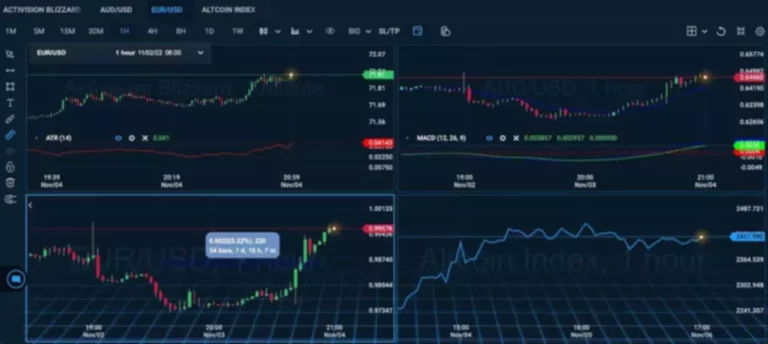In addition, centralized cloud servers are concentrated in one or several locations. In the event of an outage or other type of failure, a large number of related services are often paralyzed or even at risk of permanent data loss. They are like normal apps, and offer similar functions, but the key difference is that they are run on a peer-to-peer network, such as a blockchain, using smart contracts. Besides simple token-swap protocols, other decentralized applications in this category create and allow for the trading of more sophisticated financial instruments like derivatives and synthetic assets.
Prism allows anyone to invest in other cryptos and define the holding proportion they want. Decentralized storage networks like Swarm or IPFS could host the frontend as well as files like photos, videos, and audio. To render a webpage, traditional Web applications use HTML, CSS, javascript, or something similar. This page communicates with a centralized database that holds all of the information.
- Injection attacks are one of the most significant risks to any network-connected system.
- There are questions as to whether the applications will be able to scale effectively.
- Businesses use his app to confirm customer identities and streamline the onboarding process in a way that complies with KYC regulations.
- The web browser is recently giving huge competition to Chrome browsers in Brave, with almost 9 million active users.
- Ethereum is a flexible platform for creating new dApps, providing the infrastructure needed for developers to focus their efforts on finding innovative uses for digital applications.
Additionally, dApps are resistant to censorship because no single party can block or delete messages. To change any content shared on the dApp, community members must arrive at a consensus through a voting what is a dApp process. This is because of the widespread nature of the decentralized network. Instead of instantaneous authentication and transactions, users will have to accept a slightly slower experience.

Dapps are decentralized applications that might feel like regular apps. Behind the scene, it has some special qualities that are discussed in the article. Challenging to build — The immutability of smart contracts makes building and designing dapps especially difficult. Developers need to extensively plan and future-proof dapps right from the inception because once they deploy the underlying smart contracts, making changes to them is impossible. Furthermore, dapps are built using Ethereum’s native programming language called Solidity, which isn’t something developers learn unless they’re exclusively interested in building dapps on the platform.
Web 3.0 is coming and when it finally does arrive it will bring a massive change to how businesses build and deploy websites, web applications, and mobile applications. And with the continued rise of blockchain, it’s almost certain that a decentralized web (aka Web 3.0) is on the horizon. DApps are more stable and easily accessible compared to conventional centralized applications. Aragon also helps to eliminate unnecessary third parties by replacing them with Ethereum Blockchain-based smart contracts.
Decision-making is
performed independently by all the participating
nodes. The decentralized cloud also harnesses the
power of edge computing by moving processes and
storage to the device at the edge of the network. In
an ideal world, the fully decentralized cloud is an
architecture where every edge device can function
as a cloud server.
DApps distribute tokens which symbolize ownership, distributed based upon a pre-programmed algorithm, which encourages shared control and ownership of the dApp. But a web application is an application that is stored on a remote server and we use web browsers to interact with the web applications. A web application such as Facebook or Netflix runs on a server operated by the organization. One of the underlying technologies behind the
decentralized cloud is the InterPlanetary File
System (IPFS). Thirdweb – SDKs in every language, smart contracts, tools, and infrastructure for web3 development.

Decentralized applications are software that interacts with the blockchain, which keeps track of the state of all network participants. Decentralized applications have the same user interface as any other website or mobile app today. A decentralized application’s core logic is represented by a smart contract. Data are kept locally behind a firewall to
protect their privacy and prevent exfiltration. Data
are not duplicated to third-party servers or
secondary locations. In the decentralized cloud,
end-to-end encryption is standard, making security
much stronger.
Circulor is one of the most popular decentralized supply chain traceability applications for the electric vehicle and electronics industries. It provides traceability to demonstrate that the raw materials used in the latter’s production were ethically and sustainably sourced. Circulor is a track-and-trace platform that, among other things, allows users to secure deliveries, manage payments, and verify the origin of raw materials.
This means that there is no central point of failure, making them more resistant to hacking and other forms of cyberattack. Additionally, the decentralized nature of DApps allows for greater transparency and accountability, as all transactions and data are recorded on the blockchain and can be easily audited. DApps are built on blockchain technology, which is renowned for its robust security features. The decentralized nature of the blockchain makes it exceedingly difficult for malicious actors to manipulate or compromise the data and transactions within a DApp. DApps run on a blockchain network in a public, open-source, decentralized environment and are free from control and interference by any single authority.

They incorporate the central principles of the app and can not be altered the moment it has been installed. ETH is the most utilized blockchain, although several other blockchains may additionally be used to produce smart contracts. It is essential to understand your app project completely before beginning to create a decentralized app.
This also means you need to design your contracts very carefully and test them thoroughly. Among the most popular dapps at present are decentralized finance (DeFi) applications such as decentralized https://www.xcritical.in/ exchanges (DEXs). These enable people to swap one cryptocurrency for another without the need for a centralized gatekeeper like you’d find on exchanges like Binance, and Coinbase.
Recently, we covered basic concepts of time series data and decomposition analysis. Damian leads every step of IT projects from design through project delivery. His 10+ years of experience in the tech field helps him lead globally diverse teams on large-scale tech projects. But ultimately, this is a completely different type of infrastructure that will demand a brand new way of thinking by your developers, operations, and administrators. Though there are many dApps are used and developed, three examples of dApps include Chainlink, TraceDonate, and Minds.

